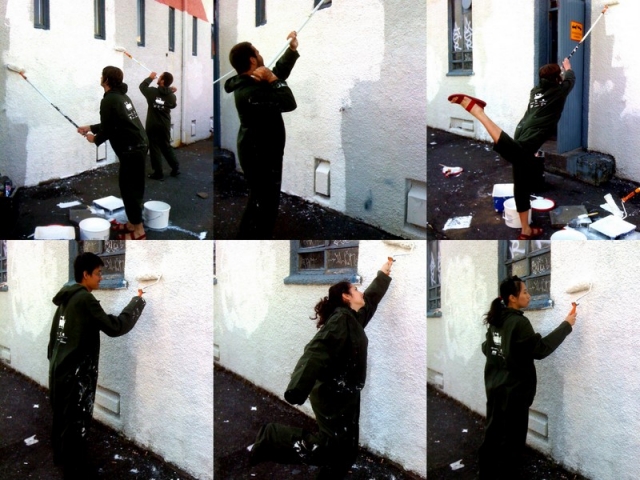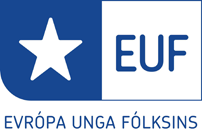
SEEDS 37. Reykjavík - Icelandic & Environment
18.08.2009

A group of volunteers who wanted to learn more about Icelandic Language and culture joined this camp.
The volunteers stayed in a cosy blue house, less than five minutes walk from Laugavegur, Reykjavik’s busiest street; and 15 minutes walk from the workplace, Austurbæjarbío. Perfectly located in the centre of one of the smallest capital cities of Europe.
During the morning our Icelandic language teacher, an inhabitant of Reykjavik, came to teach us Icelandic. As she knows a lot about Iceland and the culture we had a good combination of learning the language and learning about the culture.
The camp started with an elaborate and informative sightseeing tour in district 101. We were surprised at the sight of Icelandic children sleeping outside for their afternoon nap, well dressed for the cold. Apparently it is because they sleep better in the cold and it will make them stronger… we wondered if this is how Icelanders become real Vikings.
The Icelandic lessons started with the impressive Icelandic alphabet, with some characters that we had never seen before for example þ Ð and Æ. While our Icelandic improved day by day, learning phrases and the conjugation of different verbs, we visited the museum þjóðmenningarhusið to discover more about the film history in Iceland. All movies some of us had seen before like ‘101 Reykjavik’, ‘Angels of the Universe’ and ‘Noí Albinoi’ were present. After one week we had enough skills to translate a recipe of Icelandic cooking, and to prepare Kjötsuppa and Skyrkakka (meat soup and skyr cake). Everybody agreed that they tasted ‘mjög gott’!
There was often time for cake on this workcamp. One of the volunteers had her birthday during the camp, so we decided to prepare a cake, to decorate the room, make a birthday hat and to buy lots of presents!
In the afternoon we worked in Austurbæjarbío, an old cinema, now used as a Youth centre. It is designed as a place for young people from the area to meet and drink a cup of coffee and they can use the internet for free. Young artists can also hold exhibitions there. The centre is run predominantly with the support of volunteers, so our contribution was much appreciated.
Our task was to make the place more attractive for the young people who come there. It started with cleaning thoroughly, and later we started to paint the place. We painted lots of black on the inside, and removed graffiti from the outside of the building. We saw exhibitions being installed and rehearsals for performances on stage. At the weekend we could see the result of the exhibitions, which were on the theme of homosexuality in preparation for the Gay Pride event in Reykjavik that weekend. We assisted at the Gay Pride by filling balloons with helium for a large balloon snake for the parade, and also acted as security to keep the audience a safe distance from the float.
After the work we enjoyed our time in the centre, at the man-made Nauthólsvik Thermal Beach, one of the great geothermal swimming pools or by playing cards. The international evening was organised in cooperation with the Photomarathon workcamp. It was great to spend the evening with over 30 people, all proud of the food they had prepared, busy talking about their culture. It was a good way to connect before we met each other later in one of the bars of the centre.
Because the workcamp mainly took place in Reykjavik, during the weekends we wanted to see more! For this reason the volunteers went to Viðey Island, a quiet place with an abandoned village, a good playground for children and a restaurant for hot chocolate or coffee after a good walk around the island.
On the last weekend we decided to go for a weekend trip further away, to Vestmannaeyjar, a group of islands where the effects of the volcanic eruption of 30 years ago are still visible. It is the place to go if you like to play golf, enjoy festivals, walking and wind. This trip was a perfect ending for the camp.
Overall an interesting workcamp with an inside look at the Icelandic culture and language.







